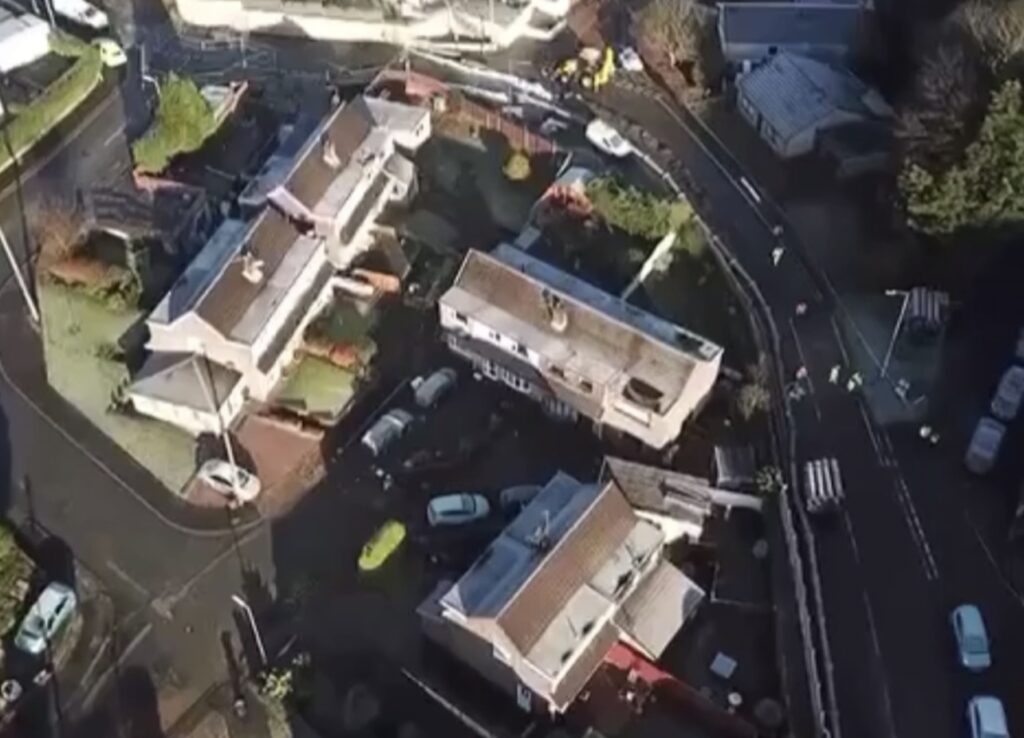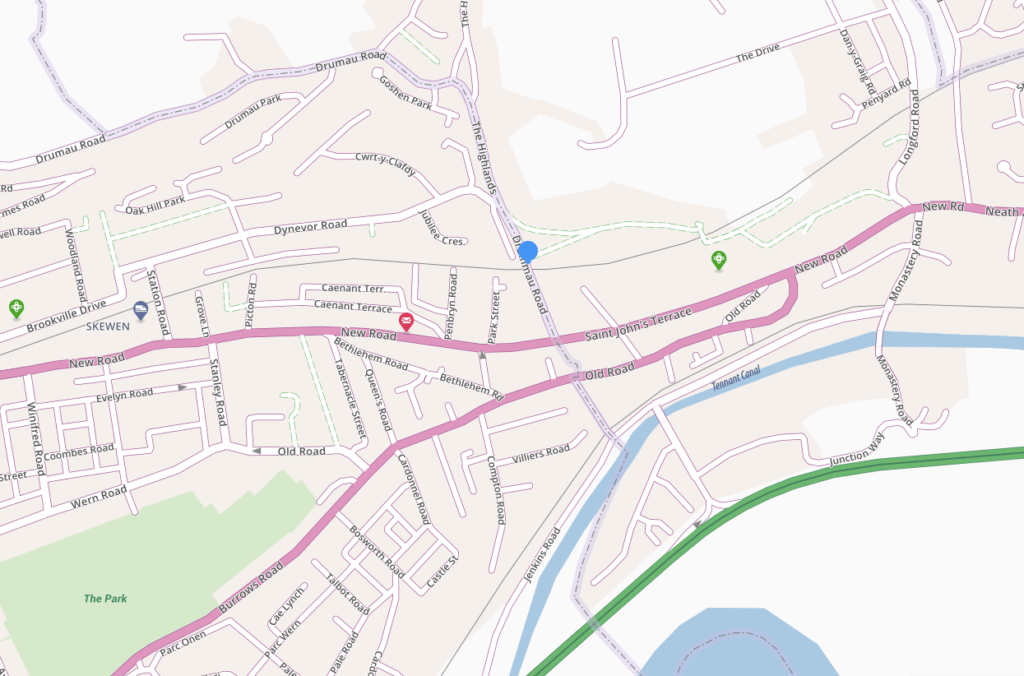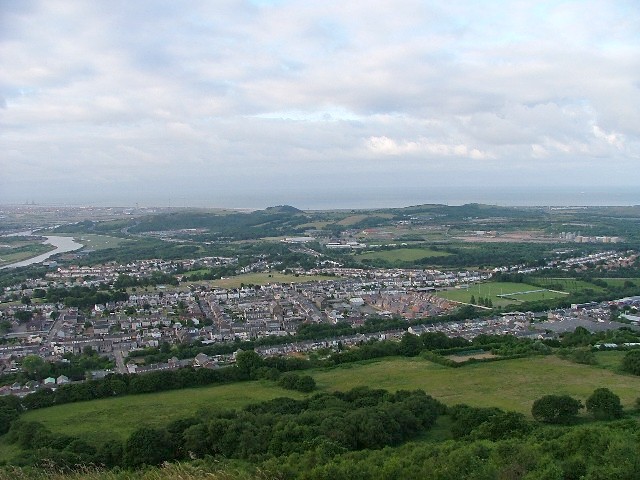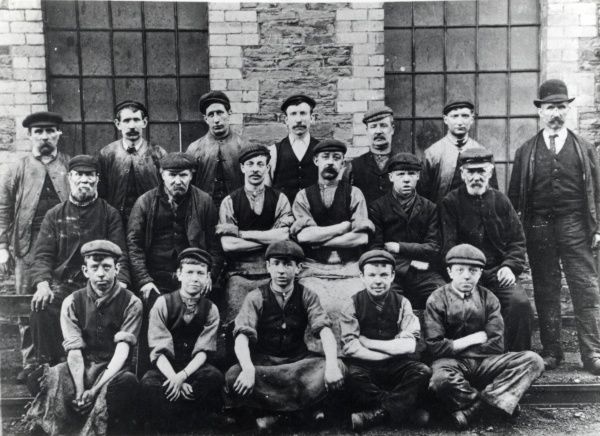Following the devastation and chaos on Thursday caused by the floods in Skewen, Neath Port Talbot, with around 80 residents evacuated and having to spend the night in temporary accommodation, the big clean up continues.
The First Minister, Mark Drakeford visited today (Sunday) to see for himself the damage cause by the flooding, and to socially-distance meet the teams involved in the clearing up. He said ‘My thoughts are with all those affected by this incident.’

On Friday Mr Drakeford said……
“Major flooding incidents can be devastating for the communities affected and the devastating scenes we have seen across Wales merit a strong and quick response for those householders affected.
This is all the more harrowing when we consider those who have had to temporarily leave their homes, or who have seen their homes and belongings damaged by floodwater, have done so during the difficulties posed by the coronavirus pandemic.”

“We will support people who have suffered flooding in their homes with support payments of £500 and £1,000, similar to the support provided to households during storms Ciara and Dennis last year.”
For more information on that, go HERE.
At least eight streets were left under water in the village, and it now appears the flood is related to mine works. Council leader Rob Jones said – the volume of water involved has hampered a full assessment so far.
To see the original aerial footage on the day of the flooding go HERE.
Water was flooding out near the junction of Goshen Park and Drummau Road, where there is a record of a mine shaft dating from the turn of the 20th Century.
It then started gushing down Drummau Road, causing the flooding that forced evacuations.
This latest aerial footage from Paul Davies, who lives in Swansea, but originally comes from Skewen, shows the scale of the work going on and the teams who are out dealing with the aftermath.
Skewen itself is a coal mining hotspot, with several former sites close by, operating in the 19th and early 20th Century. The Coal Authority is now investigating to see historic underground mining features in the area aggravated the problem.
There were colliery sites near what is now Drummau Road, in the north of the village and another close to Old Road, near Neath Abbey.
Geologist Tom Backhouse said…….
“What it looks like has happened on the junction of Goshen Park and Drummau Road, where the mine shaft is recorded, is that pressure has built up at that point and then burst out through the shaft which is very likely to have been capped with wood or something like that.
“Where you’ve got those mine shafts, which ultimately are vertical tunnels down into the mine workings below, the water has literally forced itself up through that shaft, and the pressure is obviously so great it’s caused this devastating flash flood.”
“If another event like Storm Christoph happens, the water levels in the mine rises as quickly as it did, there’s absolutely nothing to say that it wouldn’t happen again in the future.













